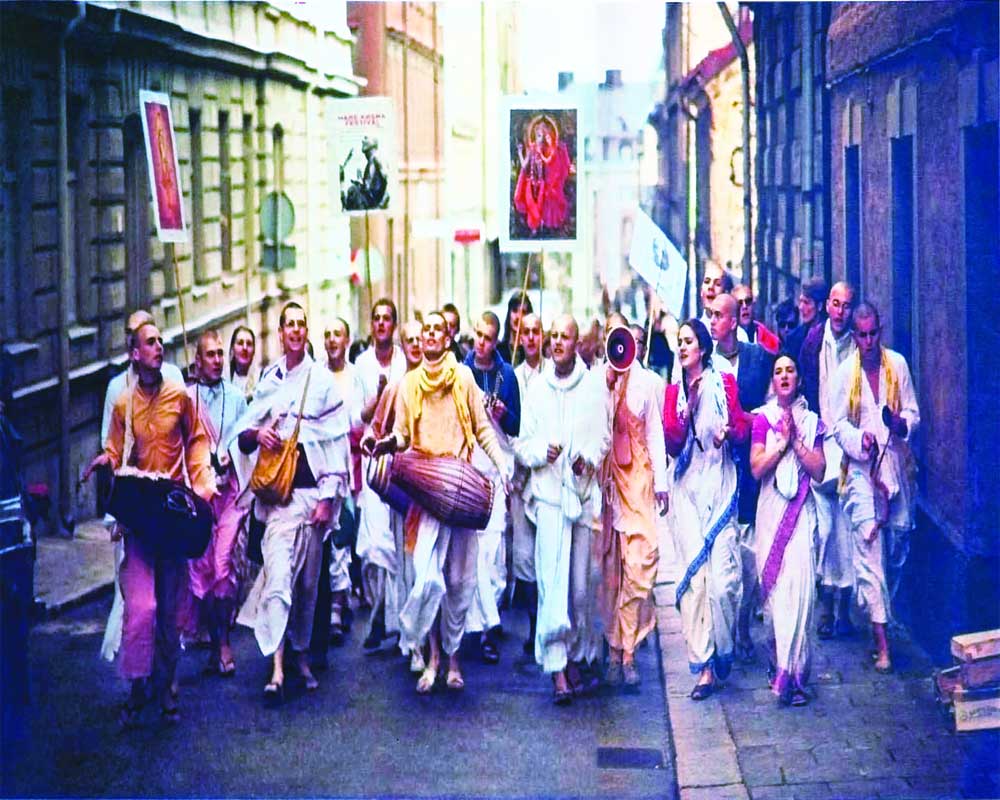Dr Asha Goswami traces the resonance of Krishna in foreign lands and the integration of Krishnaism, his ideals and concepts, in the thought process of our neighbouring countries
It is learnt that from 200 BC to 300 AD there was no permanent power in India. So the Indians mostly colonised the neighboring countries like Sumatra, Java, Borneo, Malaysia and Indo-China, some of which were even ruled by the Indians those days. Such a prevailing condition obviously served as a solid ground for the diffuse of many Indian traditions including Krishna tradition in foreign land.
How Krishna has influenced Greeks and other foreigners is to be judged from the role of Indian culture towards it as it is a proved source of inspiration to countries in all directions, especially the Southeast Asia during the time of the Guptas. Krishna’s resonance spread in the countries when Vishnu-worship had already found its way.
Firstly, Krishna’s resonance in Combodia can be traced in the form of many iconic representations of Krishna legends which are found located in the temple of Angkor Wat, which was built there in the 12th century. If we talk of Krishna’s influence in Java, it will be pertinent to mention that this country was colonised earlier by one Aji Saka, who is said to be linked to the heroes of the epic Mahabharata. Speaking of Bali, Krishna’s resonance is traceable in the form of the folk dance or ballet dance with themes from the legends of the Mahabharata as well as Raas and others. Besides, the Javanese poetical work called Kakawin refers to the Bharata war while mentioning Krishna’s role in it as a hero and charioteer to Arjuna. It can be cited as a solid testimony of Krishna’s resonance in that country.
Similarly, Krishna’s role in the abduction of Rukmini; his war with Jarasandha in which the Pandavas are said to extend their helping hand to him, are also popular stories in Java. Besides, Krishna as the lord of Dwarka is also very popular in Java. The Javanese are also well conversant with the names of Krishna’s wives. Stories of Krishna’s fight with the demon Narka or the Bhauma Asur are also cherished in the country.
Besides, the Javanese even consider their old king named Manjing as the incarnation of Bhauma, who is said to be the son of Vishnu-Krishna by Bhudevi or Prithvi. The Javanese have their own translation of Bhagavad Gita. Speaking of Krishna’s resonance in Nepal, it be stated that in their scripture, Nepal-Mahatmya, the Nepalese worship Krishna as one of the incarnations of God Vishnu. Fascination for Krishna can be marked in the form of Krishna temple located at Patan or Nepal.
As for Krishna’s appeal in Laos, the country is fascinated with the encounters of Aniruddha (Krishna’s grandson) with the demon Bana, who was felled by Krishna in order to safe guard his grandson Aniruddha. The legend of Aniruddha and his love affairs with Bana’s daughter, Usha, is popular not only in Laos, but also in Thailand, where it is preserved in the form of a Thai poem titled ‘Anirut’. The content and descriptions in the poem are almost the same as those mentioned in the Puranic scriptures of India.
Next, Krishna’s imprint in Sri Lanka can be cited in the form of his icons enshrined in the Vishnu temples. Burma’s Krishna-connect is visible in his icons in their temples, which illustrate him as one of the ten avataras of Vishnu.
Similarly, the museums at Bangkok preserve the icons of Krishna tearing apart Kansa. The stone sculptures in Thailand depicting Krishna as holding the Govardhan mountain points to the Thai representation of Krishna’s Govardhan Lila. The locals are also well versed with Krishna’s other baal lilas. Likewise, Kampuchean people hold the image of Krishna as “someone who was endowed with dark complexion, dressed in yellow with peacock feather adorning his head gear and as a man of common folk”.
Krishna’s resonance in the foreign lands can also be found in museums located in the western countries, that have preserved up to date pictorial illustrations of Krishna lilas. Among these foreign institutions are the museums located in Berlin (Germany), London (UK), Cleveland Ohio, Harvard and many other in the US. This only goes to prove that Krishna-connect beyond India has widely travelled to foreign lands.
Interestingly, not only have the Krishna traditions and his lilas travelled so far, these have also imbibed within their framework mythological traditions of other countries such as Greece, Polynesia, Australia, and Africa. Where, Shri Krishna in the form of God Jagannath enshrined at Puri (in Orissa), is shown to carry the impressions of local mythological traditions of those countries and his cowherd form as the child god of Vrindavan and Gokula is held to carry the impression of Greek gods like Heracles, Apollo and others.
Greek god Heracles is often likened to Krishna. Beautiful and eloquent Krishna seems to resonate in the personae of Greek god Apollo as well. Besides, reference to Krishna’s killing a greek king named Ksherumat in the epic Mahabharata shows that Krishna legend was elaborated on the pattern of the Greek epics.
On the other hand, Greek ambassador Heliodorus’ adoption and patronising of Krishna cult also depicts the extreme respect of the Greeks for this Indian god, Krishna. Some even link Krishna’s association with a holy festival of Greek God Dionysus and his cult. Not only this, series of Krishna’s encounter can be reckoned similar to those of the Greek gods which only goes to prove that there existed a common cultural heritage and common ancestry, common religious traditions in which some of the Indians and the Greeks had their exclusive shares! Indeed, there is so much to mark the shared culture and traditions in the world.
The writer is a noted Indologist and authority on Krishnaite Studies


























